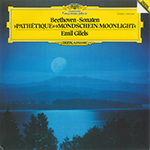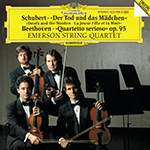Sound. During my evaluation I placed Primavera on its own amp stand with plenty of air around it. I noticed that 30-60 minutes of warmup were beneficial even if already a few minutes into it performance was close enough to peak to be utterly enjoyable. Being a dealer demo, my sample arrived fully burned in but to shake off transit sleepiness just in case, I allowed it to run for another 30-40 hours before starting critical listening. In use Primavera proved dead quiet both on mechanical noise and background noise into the two headphones I tried. With the rather sensitive Valkyria at 50Ω, the noise floor was non-existent up to almost 100% volume with no music playing. This was a remarkable demo of a super-clean power supply. Ditto Raal 1995's Immanis at 25Ω. In both cases Primavera was cruising when it came to power and control with no signs of strain or distortion even when the VU needle suggested max instantaneous power delivery. The general sound signature of Primavera was of a supremely linear transparent device capable of the best traits we associate with SET then combined with the speed, visceral impact and resolution one might expect from transistors. What many modern DHT amp designers strive to achieve—and Saša seems to belong to this flock—is what we may call a 'purity' of sound free from artificial beautification, colorations or frills and conveyed with no extra densification so free to move fast and clean at any speed a recording mandates. And this I am confident is precisely what Primavera delivers.

As a lover of an emotional connection with the music which I feel especially on acoustic instruments and vocals, I have zero sympathy for gear which analytically dissects my tunes into tiny etched pieces of data. Luckily the clear resolving Primavera never came across as detached or dry. In fact it worked the opposite of musical detachment by exposing a luminous laid-bare sight whose beauty absorbed me with moving immediacy. Instruments were full-bodied while retaining elegance and a nimble capacity to motion, float, touch, hit, even slam at any desired speed. Some single-ended triode amplifiers I tried showed their best as a harmonic flourishment around notes, a charming aura that bloomed particularly across the midrange to make strings and female vocals seem to glow from within. In some cases this came at the expense of transient precision, a certain bass wooliness and excessive poise imposed on what should have been more energetic. 300B amps with original Western Electric bottles may occasionally fall into this category though implementation always wins over a mere generalization of a certain topology or component. Other SET using 845 might be too brutal in portraying macro dynamics or induce a somewhat artificial while exhilarating image inflation. Primavera seems to sit in a very tasteful middle between these two admittedly stereotypical descriptions. It can project sonic elements in the large soundstage we expect from SET yet does not suffer from excessive scale; and reveals tonal nuance or minute detail while ready to unleash violent dynamic swings with no impediment. If one expects a warm, cozy and saturated sound, this Trafomatic will wave us onward. It prioritizes integrity of timbre to be a neutral amplifier in a good way.
 I appreciated this especially with Valkyria. These headphones are heavyweight champions that move bold and terrible like Mike Tyson in his prime but can resemble a sumo fighter if an amp does not secure its grip over their bass or secures clean fast transients. Primavera became one of if not the single best amp I yet tried on Valkyria. It was a tour de force of control over this Italian stallion's exuberance, Olympian clarity and soundstage mapping powers. Valkyria presented as strong and muscular as it was designed to be, reinforced by further subtle detail extraction and a slightly less dark and throaty tonality. I find Valkyria incredibly well suited to piano thanks to a combination of timbral realism, physical impact and a uniquely harmonic whole between wood, felt, steel and iron for the complex colour palette of this marvellous musical machine. Beethoven's Moonlight Sonata is often associated with being intimate, moving yet poignantly bleak. But when the 3rd movement of "Presto Agitato" comes, it brings a cataclysmic storm of sound in the magisterial Gilels 1981 rendition. Primavera enthusiastically empowered Valkyria to deliver the visceral parts at barbaric levels with a shattering percussive violence that combined with the richness, complexity and scale it deserves.
I appreciated this especially with Valkyria. These headphones are heavyweight champions that move bold and terrible like Mike Tyson in his prime but can resemble a sumo fighter if an amp does not secure its grip over their bass or secures clean fast transients. Primavera became one of if not the single best amp I yet tried on Valkyria. It was a tour de force of control over this Italian stallion's exuberance, Olympian clarity and soundstage mapping powers. Valkyria presented as strong and muscular as it was designed to be, reinforced by further subtle detail extraction and a slightly less dark and throaty tonality. I find Valkyria incredibly well suited to piano thanks to a combination of timbral realism, physical impact and a uniquely harmonic whole between wood, felt, steel and iron for the complex colour palette of this marvellous musical machine. Beethoven's Moonlight Sonata is often associated with being intimate, moving yet poignantly bleak. But when the 3rd movement of "Presto Agitato" comes, it brings a cataclysmic storm of sound in the magisterial Gilels 1981 rendition. Primavera enthusiastically empowered Valkyria to deliver the visceral parts at barbaric levels with a shattering percussive violence that combined with the richness, complexity and scale it deserves.

 When presented with a totally different challenge, the Emerson Quartet's 1977 version of Schubert's Death and the Maiden, the Primavera/Valkyria combo was capable of exposing an almost visual portrayal of the on-stage musicians with a sober, energetic, believable strings timbre. That said, I spent the majority of my time with Immanis mainly because I find that these transducers are possibly the most sensitive piece of gear I have owned in a long time. They reveal minute changes in my system in nearly supernatural fashion. Primavera surely was at ease with Immanis when these two Serbians share certain fundamentals like pristine sound reproduction, no-prisoners resolution and a passion for an expansive yet coherent skull-enlarging head stage. The leading edge rendered with startling speed from percussion to tympani to hi-hats, from guitar to upright bass plucks or finger snaps. From the softest to the loudest, the attack of notes had an immediacy which even transcended the real thing at times. This is a trademark of Raal ribbons and Primavera did not restrain the corrugated aluminium foils with the slightest hint of delay.
When presented with a totally different challenge, the Emerson Quartet's 1977 version of Schubert's Death and the Maiden, the Primavera/Valkyria combo was capable of exposing an almost visual portrayal of the on-stage musicians with a sober, energetic, believable strings timbre. That said, I spent the majority of my time with Immanis mainly because I find that these transducers are possibly the most sensitive piece of gear I have owned in a long time. They reveal minute changes in my system in nearly supernatural fashion. Primavera surely was at ease with Immanis when these two Serbians share certain fundamentals like pristine sound reproduction, no-prisoners resolution and a passion for an expansive yet coherent skull-enlarging head stage. The leading edge rendered with startling speed from percussion to tympani to hi-hats, from guitar to upright bass plucks or finger snaps. From the softest to the loudest, the attack of notes had an immediacy which even transcended the real thing at times. This is a trademark of Raal ribbons and Primavera did not restrain the corrugated aluminium foils with the slightest hint of delay.